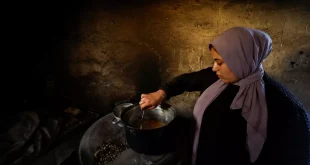The Hamas attack on 7 October has been dubbed “the biggest miscalculation in the history of all miscalculations”, by one leading Arab source.
An operation, which people informed about details of its planning say was meant to be a tactical mission designed to secure two dozen military hostages at most, turned into a chaotic rampage when Israel’s Gaza Division collapsed.
As Hamas fighters and a range of other armed actors from Gaza stormed through southern Israel, attacking military bases, kibbutz communities, and a music festival, the assault produced horrifying images of the worst massacre of Israeli civilians since the inception of the state.
Hamas stands accused by human rights groups of “deliberate civilian killings, abductions, and indiscriminate attacks” during events now the subject of an active investigation by the International Criminal Court.
Up to 250 hostages were seized, some of them foreign nationals.
In response, Israeli Prime Minister Benjamin Netanyahu has vowed to eradicate Hamas in Gaza.
A retaliatory bombing campaign aimed at pushing over one million people in the northern half of the country southwards and towards the Egyptian border is about to go into a fifth week, and Israeli soldiers and Hamas fighters are locked in battle.
The bombing has levelled the north of Gaza and killed over 9,000 Palestinians, according to Palestinian health ministry figures. It shows no sign of abating, as Israel and the US resist mounting international pressure for a ceasefire.
Hamas’s political bureau in Doha was kept out of the loop of the decision by Mohammed Deif, commander of the Izz al-Din al-Qassam Brigades, to launch the raid, Middle East Eye was told.
But as part of the leadership, Hamas’s political wing has had to take responsibility for it and is currently a key part of the Qatar-mediated negotiations over a hostage release.
Follow our live blog for all the latest on the Israel-Palestine war
This is the balance sheet as seen from outside the militant group, but it is not how Hamas itself sees these events.
To find out what Hamas thinks, MEE spoke to a senior Palestinian source in touch with the political leadership of Hamas.
MEE put three main questions to him. Why did the attack take place when it did? Are Israel’s war aims achievable? What will Hamas think it has achieved when this war is over?
Why now?
The trigger for the 7 October attack was Hamas’s concern that far-right Jews intended to sacrifice an animal at the site of al-Aqsa Mosque, thus laying the ground for the demolition of the Dome on the Rock shrine and the building of the Third Temple, he said.
Hamas had been following Israeli plans to institute a permanent Jewish presence within the al-Aqsa complex closely. Al-Aqsa is considered the third-holiest site in Islam and a symbol of Palestinian identity. It is known in Israel as the Temple Mount.
The daily presence of far-right Jews at al-Aqsa had already been achieved, with two daily incursions in the morning and afternoon in tours protected by heavily armed police and lasting from 30 minutes to an hour.
According to some messianic religious sects like the Temple Institute, a red heifer without a blemish must be sacrificed to purify the ground before the Third Temple can be rebuilt.
‘The US and regional powers left Gaza with no life but no death, as if Gaza were cowering in a corner on life support’
– Source
Red Angus cows have been imported from the US for this purpose. One Third Temple group said earlier this year that it hoped to slaughter five imported heifers during next year’s Passover holiday, which falls in April 2024.
MEE’s source said that al-Aqsa had already been divided in time and noted that settlers had made “vegetable sacrifices” at the site.
This appears to be a reference to an incursion a month ago by dozens of settlers carrying palm fronds to mark the Jewish holiday of Sukhot.
“The only thing left is the slaughtering of the red heifers which they imported from the US. If they did that, it’s the signal to rebuild the Third Temple,” said the source.
Hamas had already warned Israel that it was playing with fire by attempting to put in place arrangements at al-Aqsa similar to those at the Ibrahimi Mosque in Hebron, which is shared by Muslims and Jews alike.
Other Palestinian groups, including the Palestinian Authority, have also warned Israel about changing the status quo at the mosque.
In the three weeks leading up to the raid, there were three Jewish festivals, ending with Sukhot. “The feeling of Hamas in Gaza was that al-Aqsa was in imminent danger,” said MEE’s source.
There were also long-term factors involved in the decision to launch the attack.
The fate of the 5,200 Palestinian prisoners in Israeli detention was a “heavy responsibility” on the leadership of Hamas, the source said.
“It was in the back of Hamas’s minds every day on how they could be released.”
The third motive behind the attack was Gaza itself after 18 years of siege since Israel withdrew its settlers from the strip.
“The US and regional powers left Gaza with no life but no death, as if Gaza were cowering in a corner on life support, scrambling for food, money, or a generator. The breakout on 7 October was a big message that Gazans can break the siege,” the source said.
Can Hamas be wiped out?
It was not the first time Israeli leaders had vowed to wipe Hamas out, and every previous war had ended in Israeli withdrawal, he said.
Hamas leaders acknowledge that the scale of the devastation is different, but they still believe another Israeli withdrawal will be the final outcome, he added.
“Israel may destroy half of Gaza, but I think in the end the result will be the same. The problem for [Israeli Prime Minister Benjamin] Netanyahu will be how to finish the battle with a good image to produce to the people.
“But he has a big problem. Even if he succeeds in his war aim of eliminating the leadership of Hamas in Gaza, he still faces questions about his responsibility for the 7 October attack.”
The source dismissed the prospect of Israel achieving its main aim. He said it was physically impossible to finish Hamas off because of the size of the group and its dependents in Gaza.
“Hamas is part of the fabric of society. You have the fighters and their families. You have the charities and their families. You have the government workers and their families. Put that together and it’s a very substantial part of the people.”
While Hamas did not foresee an Israeli response on this scale, it has an extensive network of tunnels, which run for “many hundreds of kilometres”, MEE was told by another source.
The idea that Hamas would cease to operate if it lost Gaza City, which the Israeli forces are trying to encircle, is therefore less likely.
Similarly, Hamas is not dependent on Hezbollah joining the war, but many inside the movement see its involvement as inevitable.
They say that if Hezbollah allows Hamas to be finished off, it would only be a matter of time before Israel turned on the Lebanese group.
What will Hamas have achieved after this battle is over?
Hamas does not think the clock can be put back to 6 October when the war ends, with Gaza starting all over again, he said.
“The 7 October attack gave a direct and exact message that Palestinians have the ability to defeat Israel and get rid of the occupation. For Hamas that is now a fact,” he said.
Hamas thinks the attack has broken a covenant that has existed between the Israeli army and the people since the declaration of the state in 1948.
The unspoken pact was that the people would send their sons and daughters to the army and the army would in return protect the country.
‘Their [Israel’s] strategy was to have everything. For this reason they would lose everything. They underestimate the Palestinians’
– source
According to the source, Hamas believes the current conflict has “moved the Palestinian people and the Palestinian resistance towards victory and liberation”.
He added: “I think Israel lost a lot of confidence in the future.”
Hamas acknowledged the heavy price being paid by people in Gaza, he said. But it believed most would choose to stay, rather than flee from a second Nakba, a reference to the 1948 displacement of 750,000 Palestinians from their ancestral homeland. For most people there is no choice: Gaza’s border with Egypt and its frontier with Israel are closed and there is nowhere safe from the bombing.
“Every Palestinian knows that they have to stay on their land, even if it has been turned to rubble and they are living in tents,” he said.
Hamas thinks Israel made a huge strategic mistake in rejecting the multiple Arab peace initiatives that would have led to an end to the conflict.
“Their strategy was to have everything. For this reason, they will lose everything. They underestimate the Palestinians,” said the source.
He said that while western capitals were waiting for an era after Hamas, the Palestinian resistance was waiting with confidence for an era when they could live in a state of their own.
He acknowledged that the Israeli army had an overwhelming military advantage. But he insisted the results of war do not always depend on the balance of power.
“Look at Vietnam, look at Afghanistan, look at Algeria. Look at how these colonial wars ended,” he said.
 Sri lanka Muslims Web Portal Diversity and Inclusiveness
Sri lanka Muslims Web Portal Diversity and Inclusiveness




